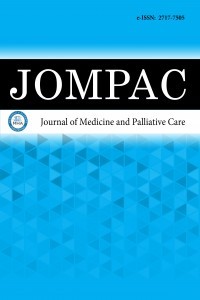1.
Taner D. Fonksiyonel anatomi ekstremiteler ve sırt bölgesi, 4.Baskı. Ankara: HYB Basım Yayın; 2009.
2.
Simriti NS, Ashwani Sharma RM. Morphological andmorphometric study of dry human sacra in Jammu region. JKScience. 2017;19:154-156.
3.
Arıncı K. Elhan A. Anatomi. 3. Baskı. Ankara: Güneş Kitabevi;2001.
4.
Stranding S. Gray’s Anatomy. The anatomical basis of clinicalpractice. 41st Ed. London: Elsevier; 2016.
5.
Hansen JT. Netter’s clinical anatomy. 4th Ed. Newyork: Elsevier;2018.
6.
Duman T. Yetişkinlerde os sacrum’un çok kesitli bilgisayarlıtomografi ile morfometrik incelenmesi. Yüksek Lisans Tezi.Selçuk Üniversitesi, Konya; 2009.
7.
Gövsa Gökmen F. Sistematik Anatomi. 1. Baskı. İzmir: GüvenKitabevi; 2003.
8.
Yıldırım M. Topografik anatomi. 1. Baskı. İstanbul: Nobel TıpKitabevi; 2000.
9.
Başaloğlu H, Turgut M, Taşer FA, Ceylan T, Başaloğlu HK,Ceylan AA. Morphometry of the sacrum for clinical use. SurgRadiol Anat. 2005;27(6):467-471. doi:10.1007/s00276-005-0036-1
10.
Peretz AM, Hipp JA, Heggeness MH. The internal bonyarchitecture of the sacrum. Spine (Phila Pa 1976). 1998;23(9):971-974. doi:10.1097/00007632-199805010-00001
11.
Koç T, Ertekin T, Acer N, Cinar S. Os sacrum kemiğininmorfometrik değerlendirilmesi ve eklem yüzey alanlarınınhesaplanması. Erciyes Üniv Sağ Bil Derg. 2014;23:67-73.
12.
Kothapalli J, Velichety SD, Desai V and Zameer MR.Morphometric study of sexual dimorphism in adult sacra ofSouth Indian population. Int J of Biol Med Res. 2012;3:2076-81.
13.
Janipati P, Kothapalli J, Shamsunder RV. Study of sacral index:comparison between different regional populations of India andabroad. Int J Anat Res. 2014;2(4):640-644.
14.
Patel S, Nigam M, Mishra P and Waghmare CS. A study of sacralindex and its interpretation in sex determination in MadhyaPradesh. J Indian Acad Forensic Med. 2014;36:146-149.
15.
Sachdeva K, Singla RK, Kalsey G and Sharma G. Role of sacrumin sexual dimorphisim A morphometric study. J Indian AcadForensic Med. 2011;33:206-210.
16.
Singh SN, Sharma A, Magotra R. Morphological andmorphometric study of dry human sacra in Jammu region. JK Sci.2017;19:154-156.
17.
Kumar A, Wishwakarma N. An anthropometric analysis of dryhuman sacrum:gender discrimination. Int J Sci Res. 2015;4:1305-1310.
18.
Mustafa MS, Mahmoud OM, El Raouf HHA and Atef H.Morphometric study of sacral hiatus in adult human Egyptiansacra: Their significiance in caudal epidural anesthesia. Saudi JAnaesth. 2012;6:350-357.
19.
Mishra SR, Singh PJ, Agrawal AK. Identification of sex of sacrumof Agra region. J Anat Soc India. 2003;52:132-136.
20.
Sinha MB, Rathore M, Trivedi S and Siddiqui AU. Morphometryof first pedicle of sacrum and its clinical relevance. Int J HealthcBiomed Res. 2013;1:234-240.
21.
Vasuki AKM, Sundaram KK, Nirmaladevi, Jamuna M, HebzibahDJ, Fenn TKA. Anatomical variations of sacrum and its clinicalsignificance. Int J Anat Res. 2016;4:1859-1863
22.
Laishram D, Ghosh A, Shastri D. A study on the variations ofsacrum and its clinical significance. J Dent Med Sci. 2016;15:8-14.
23.
Cheng JS, Song JK. Anatomy of the sacrum. Neurosurg Focus.2003;15:1-4.
24.
Isaac UE, Ekanem TB, Igiri AO. Gender differentiation in theadult human sacrum and the subpubic angle among indigenes ofcross river and Akwa Ibom States of Nigeria using radiographicfilms. Anatomy J Africa. 2014;3:294-307.
25.
Patel MM, Gupta BD, Singel TC. Sexing of sacrum by sacral indexand kimura’s base-wing index. JIAFM. 2005;27:5-9.
26.
McGrath MC, Stringer MD. Bony landmarks in the sacralregion:the posterior superior iliac spine and the second dorsalsacral foramina:a potential guide for sonography. Surg RadiolAnat. 2011;33:279-286.
27.
Dubory A, Bouloussa H, Riouallon G, et al. Wolff S. A computedtomographic anatomical study of the upper sacrum. Applicationfor a user guide of pelvic fixation with iliosacral screws in adultspinal deformity. Int Orthop. 2017;41(12):2543-2553. doi:10.1007/s00264-017-3580-5.
28.
Banik S, Mohakud S, Sahoo S, Tripathy PR, Sidhu S, GaikwadMR. Comparative morphometry of the sacrum and its clinicalimplications: a retrospective study of osteometry in dry bonesand CT scan images in patients presenting with lumbosacralpathologies. Cureus. 2022;14(2):e22306. doi:10.7759/cureus.22306.

